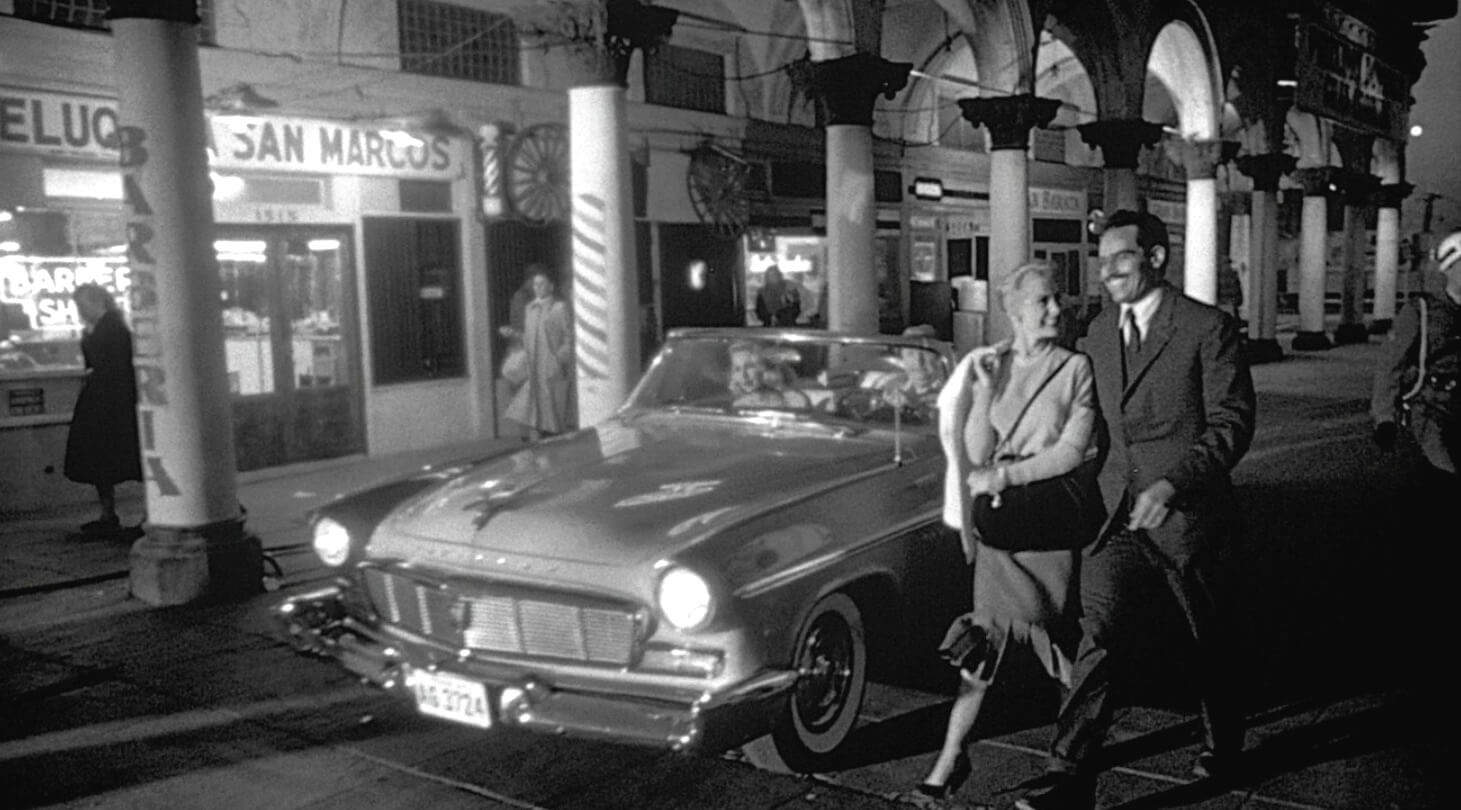Catch up on the series and find new installments daily here.
__________________________________
Touch of Evil (1958)
__________________________________
TYPE OF FILM: Noir
STUDIO: Universal-International
PRODUCER: Albert Zugsmith
DIRECTOR: Orson Welles
SCREENWRITER: Orson Welles
SOURCE: Badge of Evil, novel by Whit Masterson
RUNNING TIME: 108 minutes
PRINCIPAL PLAYERS:
Charlton Heston……………………………………………………Captain Miguel “Mike” Vargas
Janet Leigh…………………………………………………………………..……….Susan Vargas
Orson Welles…………………………………………….…………………………..Hank Quinlan
Joseph Calleia………………………………………………………..……………….Pete Menzies
Akim Tamiroff…………………………………………..…………………….“Uncle” Joe Grandi
Joanna Moore……………………………………………………………..………Marcia Linneker
Victor Millan………………………………………………………………………Manolo Sanchez
Marlene Dietrich……………………………………………………………………..Madame Tana
Dennis Weaver………………………………………………………..…………………hotel clerk
Ray Collins…………………………………………………………………District Attorney Adair
Zsa Zsa Gabor…………………………………………………………………..owner of strip joint
__________________________________
DID YOU KNOW?
__________________________________
There are uncredited cameo appearances by Mercedes McCambridge, Joseph Cotten, and Keenan Wynn, all friends of Welles.
__________________________________
THE STORY
__________________________________

Los Robles is a small, rotting Mexican border town filled with corruption. When a Mexican narcotics detective, Captain Miguel (“Mike”) Vargas, drives through on his honeymoon with Susie, he witnesses a car exploding and takes an interest in the case because the car had recently also come over the Mexican border.
It quickly becomes evident to Vargas that Hank Quinlan, the dissolute 300-pound local Texas police captain, plans to frame a young Mexican, Sanchez, for the crime, so he stays in the worn-out hellhole to learn why. His investigations into the long career of Quinlan reveal that he never got over the murder of his wife thirty years earlier and that he has sunk to excessive drinking and eating. When a former girlfriend, Madame Tana, sees him after some years, she says, “I didn’t recognize you. You should lay off those candy bars.” He runs the town, doing the dirty work for the district attorney and the police chief, both of whom fear him, and both of whom he finds contemptible because of their corruption. When Quinlan learns that Vargas is becoming a threat, he joins forces with “Uncle” Joe Grandi, the town drug lord, to bring down the incorruptible Mexican cop. Grandi terrorizes Vargas’s wife, Susie, planting drugs in her room as an attempt to portray her as an addict, but Quinlan decides to go a step further and murders Grandi, planning to pin the crime on the “drug-crazed” girl.
When the vicious double cross is revealed to Quinlan’s partner, Peter Menzies, it marks the beginning of the end for the bloated cop, as his old friend betrays him to Vargas.
***
This strange, dark, film was made as a B-movie on a small budget, as a distrustful studio would allow Orson Welles very little freedom with its budget. Offered the role of Quinlan, Welles offered to write the screenplay and direct the film for no additional money, hoping it would be the beginning of a return to a filmmaking career in Hollywood. Touch of Evil was to be the last film he ever made in Hollywood. It is possible to draw a parallel with Welles’s career and that of Quinlan’s, both of whom were doomed by their arrogance. The last line of the movie, then a commercial failure but now recognized as a superb achievement, was spoken softly by the madame of the whorehouse in which Quinlan spent some time. “Adios.” (Incidentally, though identified as “Tanya” in the screenplay, Dietrich is called “Tana” in the film). Although Welles came in only a few dollars over budget, his time in the editing room was moving along so slowly that the studio took away his right to edit the film as he wanted to, adding scenes and removing others, sending Welles back to Europe (where he was in self-imposed exile for several years).
In 1998, Touch of Evil was reedited according to Orson Welles’s fifty-eight-page memo, written just after he was removed from the film, bringing it as close as possible to his vision. One of the most famous opening shots in film history, a three-minute and twenty-second tracking shot, was shown as intended, without superimposed titles and with various bits of local music instead of Henry Mancini’s score.
__________________________________
BEST LINE
__________________________________
Hank Quinlan walks into a familiar sporting house and sees Madame Tana spreading a deck of tarot cards: “Come on, read my future for me.” Tana says, “You haven’t got any.” Quinlan, taken aback, mumbles, “Huh? Whadda ya mean?” Tana: “Your future is all used up.”


















